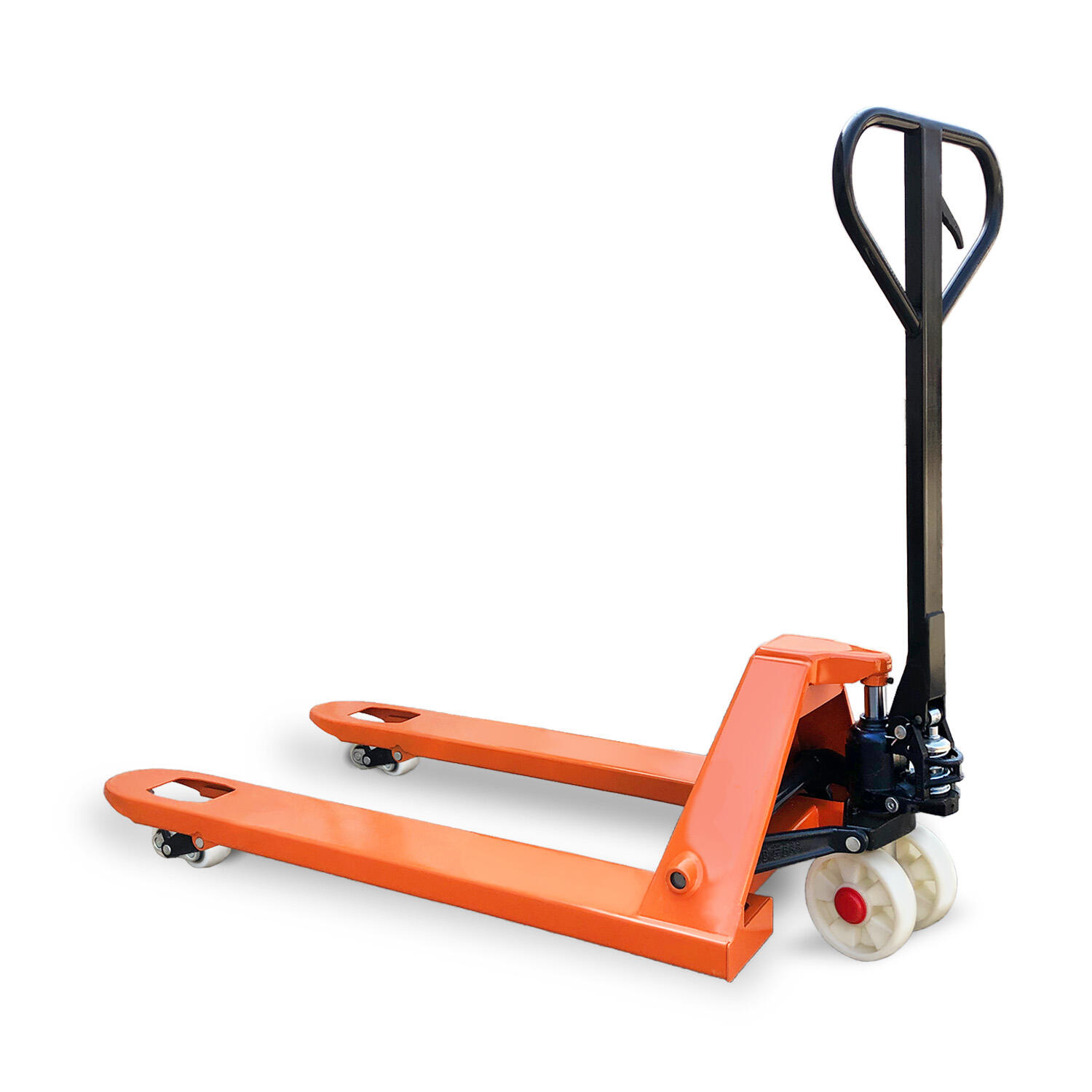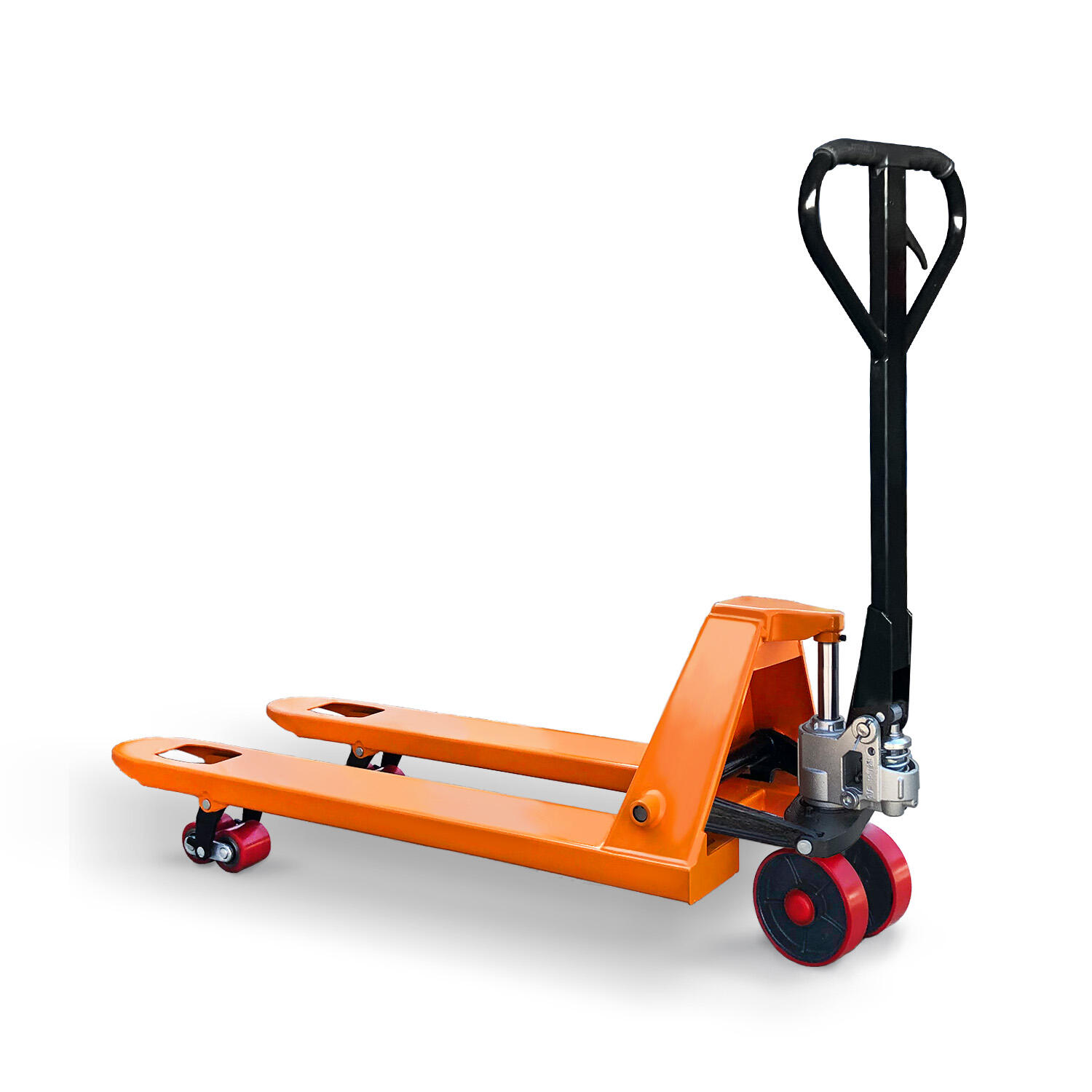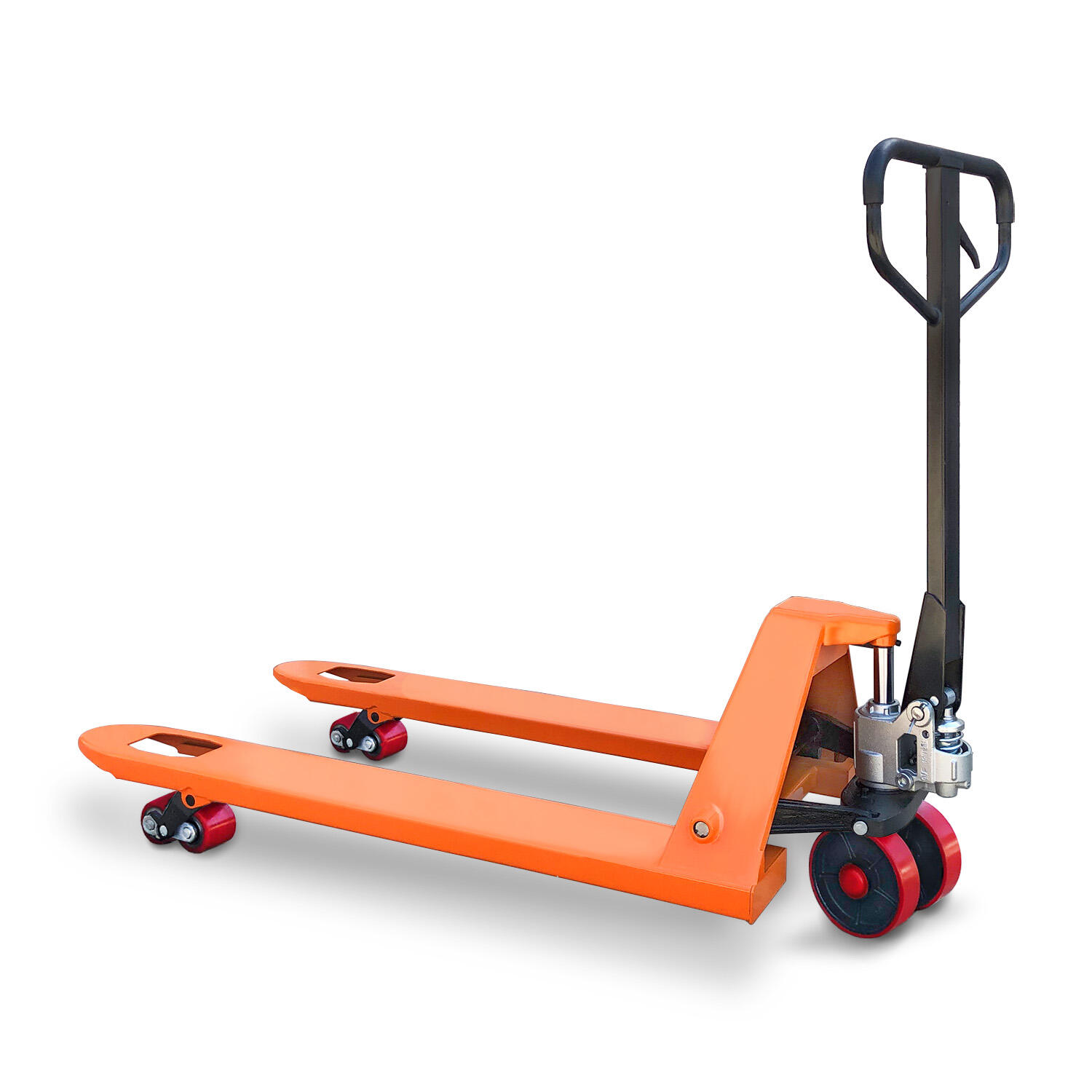מנוע חבילות יד הוא כלי בסיסי בהגברת חומרים, שנועד לפשט את התחבורה של סחורות חבילות באמצעות הפעלה ידנית. הוא מוצר בסיסי במחסן, מפעלים, חנויות קמעונאות ומרכזי לוגיסטיקה, ומציע פתרון יעיל ומוסמך עבור העברת מטענים כבדים ללא צורך במקורות חשמל. ציוד זה חיוני עבור עסקים בכל הגדלים, מכיוון שהוא מאפשר למפעילים לתמרן את המשאיות בקלות, להפחית מתח פיזי ולשפר את יעילות התפעול. העיצוב המרכזי של מנוע חבילות ידני כולל מסגרת פלדה חזקה המספקת את החוזק הדרוש לתמוך בעומסים כבדים, בדרך כלל בין 1,000 ק"ג ל-2,500 ק"ג. המסגרת בנויה כדי לעמוד בביגוד יומיומי, כולל שימוש תכוף על משטחים גסים וחשיפה לתנאי מזג אוויר שונים בסביבות חיצוניות. על המסגרת מחוברים שני מזלגים, עשויים מפלדה איכותית, אשר זזים מתחת ללוחות כדי להרים ולהאחז בהם במהלך התחבורה. המזלגות בדרך כלל מרוחקות כדי להתאים את מימדי הפלטות הרגילים, אך מודלים מסוימים כוללים רוחבים קבועים כדי להכיל גדלים שונים של פלטות, תוך שיפור השונות. מנגנון ההרים של מנוע חבילות ידני מופעל על ידי מערכת הידרוליקה הפועלת באמצעות משאבה ידנית. על ידי שאיבת הידית, נוזל הידרולי הוא לחץ, להעלות את המזלגות לגובה מספיק כדי לנקות את הקרקע - בדרך כלל כמה סנטימטרים - המאפשר את הטחנת להיות נעים. פעולה ידנית זו מבטלת את הצורך בחשמל או בבטריות, מה שהופך את מכונת המנוע לפלט לשימוש במקומות מרוחקים, אזורים חיצוניים, או מתקנים עם גישה מוגבלת לחשמל. המערכת ההידרוליקה תוכננה להיות עמידת דליפה, עם חותמות עמידות וצינורות להבטיח ביצועים עקביים לאורך זמן. היכולת לתמרון היא מאפיין מרכזי של מנוע חבילות ידני, הודות לגודל הקומפקטי שלו ועיצוב הגלגל היעיל. הוא מצויד בארבעה גלגלים: שני גלגלים סובבים בחזית עבור סיבוב קל ושני גלגלים קבועים מאחור עבור יציבות. הגלגלים עשויים מחומרים איכותיים כגון פוליוריתן או גומי, המספקים נסיעה חלקה על בטון, אספלט ושטח אחר תוך שמירה על הרעש למינימום ומניעת נזק לרצפה. זה מאפשר למפעילים לנווט דרך מסלולים צר, פינות צרות, ומקומות צפופים במידת דقة, מה שהופך אותו אידיאלי לשימוש במחסן עמוס וחדרי חנויות. ארגונומיקה משחקת תפקיד מכריע בעיצוב של מנוע חפיסות ידני, להבטיח נוחות ובטיחות של המפעיל במהלך שימוש ממושך. הידית מעוצבת ארגונומית עם אחיזה בלתי חלקת, הפחתת עייפות יד ופרק יד. הוא ממוקם בגובה המאפשר למפעילים לעמוד זקופים, ומונעים מכופפות או כפפות שיכולות להוביל לפציעות בגב. פעולה הדחף הנדרשת כדי להרים את העומס תוכננה להיות יעילה, דורשת מאמץ מינימלי כדי להשיג כוח הרמת מקסימלי. חלק מהדגמים מכילים גם ידית מקופלת, מה שמקל על אחסון כאשר הציוד לא בשימוש. תכונות בטיחות משולבות במנוע הסלוחים הידני כדי למנוע תאונות ולהגן על המפעילים והסחורה. שסתום הורד מאפשר ירידה מבוקרת של המזלגות, ומונע ירידות פתאומיות שיכולות לפגוע במשאית או לגרום למנוע להתפנות. דגמים רבים כוללים בלם חניה המאבטח את הציוד במקום בעת הטעינה או ההורדה, ומונע תנועה לא מכוונת. המסגרת החזקה והבסיס הרחב מספקים יציבות, אפילו כאשר נושאים עומסים לא אחידים, ומפחיתים את הסיכון להתפופף. בנוסף, המזלגות מעוצבות עם קצוות מעוגלים כדי למנוע נזק לפלטות או סחורות במהלך הטיפול. תחזוקה של מכונת מניעה ידנית היא פשוטה, מה שמתרם לתוחלת החיים הארוכה שלה לביצועים אמינים. משימות תחזוקה קבועות כוללות בדיקה של רמת הנוזל ההידרולי והגדלתו אם יש צורך, בדיקה של צינורות וחיסומים עבור דליפות, ושמן חלקים נעים כגון מחילות גלגלים ונקודות עיקול. ניקוי המסגרת והספלים כדי להסיר מלוכלך, חומרי דשא ולחות עוזר למנוע חלודה וקרוסה. בניגוד למכשירים מונעים, אין צורך לתחזוקה של רכיבים חשמליים מורכבים, מה שמפחית את הצורך בכלים מיוחדים או שירות מקצועי. קלות תחזוקה זו מבטיחה כי המנוע ידני של חבילות נשאר פעיל עם זמן הפסקות מינימלי. יישומי מנוע חבילות ידני מגוונים, מה שהופך אותו למכשיר רב-תועלת בכל התעשויות. במחסן, הוא משמש להעברת חבילות בין מדפים אחסון, רציפי הטעינה, ואזורים מיון. במכירת הקמעונאות, הוא מסייע במלאי מדפים מחדרי אחסון, ומאפשר לצוות להעביר מוצרים ביעילות. בייצור, היא מעבירה חומרי גלם לקווי ייצור ומוצרים גמורים לאתרי אחסון או משלוח. הוא גם שימושי באתרי בנייה לובלת חומרי בניין ובסביבות חקלאיות להזיז חומרים למזון או חבילות מוצרים. הניידות שלו וחוסר דרישות כוח הופכים אותו מתאים למקומות זמניים או מרוחקים שבהם לא ניתן להשתמש בציוד אחר. היעילות בעלות היא יתרון משמעותי של מנוע חבילות ידני. יש לו מחיר רכישה ראשוני נמוך יותר בהשוואה לחלופות חשמליות או מופעלות, מה שהופך אותו נגיש לעסקים קטנים וסטארט-אפים. מכיוון שאין עלויות מתמשכות על חשמל, סוללות או דלק, זה גם זול יותר לניהול. עמידותו וצרכי תחזוקה נמוכים מורידים עוד יותר את ההוצאות לטווח ארוך, ומספקים ערך מצוין לכסף. עבור עסקים עם צרכים מתונים של טיפול בחומרים, מנוע חבילות ידני מציע פתרון זול שאינו פוגע ביצועים. לסיכום, מנוע חבילות יד הוא כלי חיוני לטיפול יעיל ובטוח בחומרים. בנייתה החזקה, מנגנון ההרים ההידרולי, העיצוב הארגונומי וקל הטיפול הופכים אותה לבחירה אמינה עבור עסקים המבקשים לשפר את היצרנות ולהפחית את מקרי הפציעות במקום העבודה. בין אם משתמשים בו במחסן גדול או בחנות קמעונאית קטנה, הוא מספק ביצועים עקביים, מוכיח את הערך שלו כחלק חיוני של ציוד טיפול חומרים.


